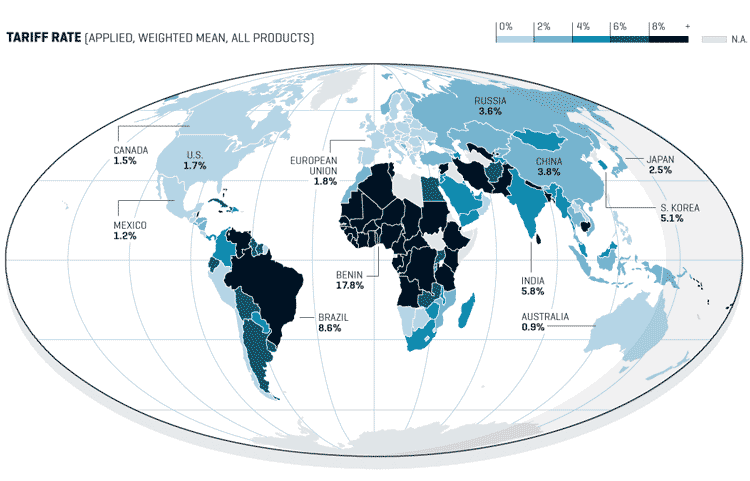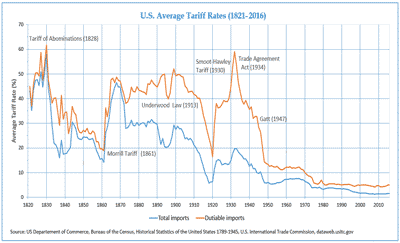 |
Looking out from Hell Town tonight... |
 |
| Looking west across Santa Rosa Sound towards Pensacola from Navarre Beach, some 28 miles south of Milton. The beach is part of Navarre proper, an unincorporated community occupying roughly 12 miles of shoreline along the Gulf of Mexico. It has shorelines on both sides of Santa Rosa Sound as well as along East Bay and the East Bay River. Navarre has grown from a small community of U.S. military personnel, retirees, nature enthusiasts and tourists numbering around 1,500 in 1970 to a town of 44,876 today. | |
Vital Signs charts
COVID-19 JOURNAL
(7-day avg, 1/27/21, NY Times)
-- Vaccinations:-
One dose: 6.5% of pop.
two doses: 1.3% of pop.
(1/14/21, USA Today)
11/6/2020 -- Days of our Lives, from Here to January 20
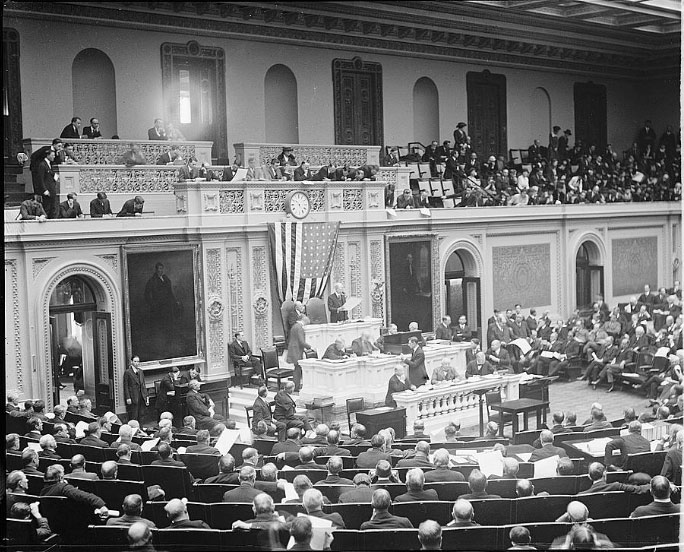
November 3 – Election Day
States start vote counting as soon as the polls close. Some states start counting mail-in ballots as they are received, and some don't. While news networks will project winners in certain races, there is always time after Election Day for provisional or mail-in votes to be counted. Mail-in ballots generally must be postmarked by November 3 but can be received late and still counted in many states. Generally, they must be received within a day or two of Election Day. (In Washington State, mail-in ballots can be received as late as November 23.)
November 10 to December 11 - States certify election results.
Count, recount, check, double check. Actual dates vary by state. but the week after Election Day, state governments begin to certify election results. Deadlines can be changed in the event of a recount if there is an extremely close result. Most of these dates occur in the last two weeks of November and all but California's are mandated to occur by December 8.
December 8 - "Safe harbor" date for determining results and assigning electors.
States should have counted votes, settled disputes and determined the winner of their Electoral College votes. Governors create certificates of ascertainment listing the winner of the election and the slate of electors.
December 14 - (first Monday after the second Wednesday in December)
Electoral votes are cast in each state.
December 23 - Electoral Votes must arrive in Washington.
Certified electoral votes have nine days to get from their states to Capitol Hill.
January 3 - New Congress is sworn in.
The official start of the 117th Congress. Members of the House and new members of the Senate take the oath of office at noon.
January 6 - Electoral votes counted.
Members of the House and the Senate meet and the Electoral votes are read and counted in alphabetical order by two appointees each from the House and Senate. They then give their tallies to the President of the Senate, who announces the results.
If there are objections or if multiple slates of electors have been put forward by states, the House and Senate consider them separately to decide how to count those votes.
There are 538 electoral votes—one for each congressman and senator plus three for Washington, DC. If no candidate gets 270, the 435 members of the House decide the election. Each state gets one vote. Republicans, as of now, control more state delegations, so it is possible the House could pick Donald Trump even though it has a Democratic majority. The House has until noon on January 20 to pick the President. If they can't, it would be the vice president or the next person eligible in the line of presidential succession. If neither a president nor vice president gets picked, the next person in the line of succession is the speaker of the House, which today is Nancy Pelosi.
Meanwhile, according to the 12th amendment, senators pick the vice president. It is technically possible the House could get deadlocked on the president and the Senate could pick a vice president who would become President. If there's a 50-50 tie in the Senate, it's strangely possible that Vice President Mike Pence could cast the deciding vote that gives him another term.
January 20 - Inauguration Day
The new president takes the oath of office at noon. If the president-elect dies between Election Day and the Inauguration, the vice president-elect takes the oath of office and becomes president. In a disputed election, if the House has not chosen a president but the Senate has chosen a vice president, the vice president-elect becomes acting president until the House makes a choice. And if there's no president-elect and no vice president-elect, the House appoints a president until one is chosen. Under the Presidential Succession Act, that place-keeper president would likely be Nancy Pelosi if she resigned from Congress.
If you didn't know, now you know.
10/31/13 -- Trick or Treat ....
 Happy Halloween! Click on the candy for Sammy's annual unsolicited Halloween guidance to his children. Who knows? It could make you a better person.
Happy Halloween! Click on the candy for Sammy's annual unsolicited Halloween guidance to his children. Who knows? It could make you a better person.10/30/20 -- So We Beat on, Boats against the Corona ....
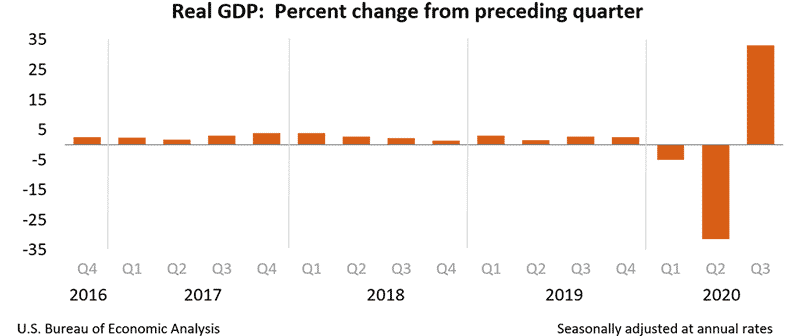
CNN reported that the Trump campaign celebrated with a bevy of Facebook ads ads touting "fastest GDP growth in history," "the great American comeback" and a "surging" economy. These, however, offered no instructive context qualifiers.
It really was a good performance, the biggest gain since we started keeping track shortly after the end of World War II. And tremendously anxiety-lessening because it means the economy has gained back much of the ground lost to the pandemic in the previous two quarters.
To be sure, we're chugging along at well below our pre-pandemic level, with GDP some $670 billion lower 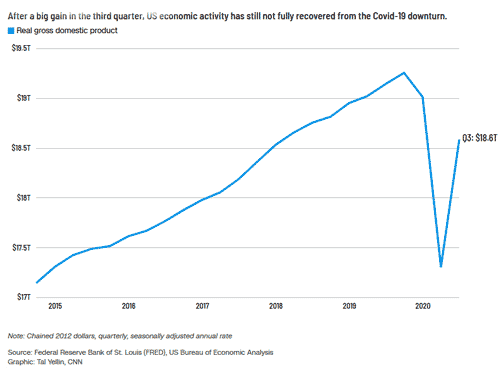 than where it was at the end of 2019. Think of it this way: It's as if you were swimming along when a massive undertow suddenly dragged you down 50 feet below the surface. Now you're only 20 feet below. A little short of oxygen, but keep going and you'll be back on the surface and breathing normally again in no time at all.
than where it was at the end of 2019. Think of it this way: It's as if you were swimming along when a massive undertow suddenly dragged you down 50 feet below the surface. Now you're only 20 feet below. A little short of oxygen, but keep going and you'll be back on the surface and breathing normally again in no time at all.
Annualized numbers make it a little harder than it should be for many of us get a clear picture of what's going on. It's easier this way. The actual percentage gain in GDP from the previous quarter was 7.4 percent adjusted for inflation. The loss from the prior two quarters was 9.2 percent.
And still not the greatest economy ever, but then it never was. But it was a really good economy and hopefully will be back to being one again, and sooner than many dared hope. Here's another bit of cheer as well. As discombobulating as the shutdown was, on nerves, on lifestyles on livelihoods, it didn't really do that much permanent damage. Did it?
Small solace of course to the thousands who lost their jobs. Their homes. Or their businesses. Just as the shutdown itself offered small solace to those who could not physically survive it, or to the loved ones they preemtorially left behind. A bad turn of events all around, meeting out punishment very unevenly. With luck many lives were saved in the process, and with luck (and some help) many lucky survivors will find new jobs, establish new housing and found new businesses. And —if we could just behave properly for a few months—with luck someday soon this all will be behind us.
7/18/20 -- Ole Man River
On a personal note, the Skelly family assembled in June on the Panhandle to celebrate Fathers' Day and your correspondent's 75th birthday. Festivities included a pontoon boat excursion on the Blackwater River and Bay.

We sailed under the capable guidance of Capt. Ken Ponsell, local riverman and member in good standing of the Blackwater Pirates, a civic organization of boatmen, water enthusiasts and environmentalists.
Ken runs—more accurately embodies—Blackwater Bay Tours (his wife runs the office). For two hours we motored from his slip on Bain Canal into the larger Blackwater Bay, then up the river, under the I-10, which connects Pensacola to Jacksonville along the northern rim of Florida. We passed the site of the old lumber mill, past nesting ospreys, and just south of town under (just barely) the old railroad bridge that used to carry the traffic of the old Florida Coast passenger trains (and still carries CSX freight) to and from New Orleans.
And then back. Along the way, Capt. Ken proved fairly well informed, complete with reference books, charts and photos, holding forth on the river's physical features, historical lore, native wildlife and role in making Milton the thriving lumber and brick producer and distributor it was from before the Civil War up until the 1930s,
 supplying customers around the South and in markets overseas as well. Fortunately there was no final exam because we were drinking pretty much the entire way. (Not the captain; designated driver: Coast Guard rules.)
supplying customers around the South and in markets overseas as well. Fortunately there was no final exam because we were drinking pretty much the entire way. (Not the captain; designated driver: Coast Guard rules.)
It was billed as a sunset cruise, but there was no sunset that day, which was okay with us. The Skellys, being individually and in congress, an unusually inquisitive lot (especially after imbibing, kept the pilot busy fielding a broad array of questions peppered at him from all angles and in no particular logical order.
What happened to the mill? What happened to the wood? What kind of wood? (Heartwood pine: trees that grew to be 175 ft. tall and over 12 ft. wide). What happens to the ospreys? (They depart in winter, their place taken by bald eagles.) Is there a can opener on board? How about a cheese knife?
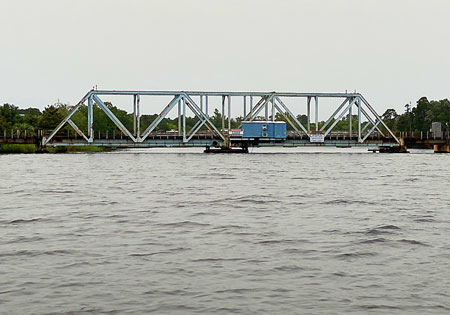 Milton's railroad bridge, a swing type supported on vertical pivots. The movable span rotates horizontally to open and close. When closed, its vertical clearance is only eight feet. People in small boats have forgotten to duck, with calamitous consequences.
Milton's railroad bridge, a swing type supported on vertical pivots. The movable span rotates horizontally to open and close. When closed, its vertical clearance is only eight feet. People in small boats have forgotten to duck, with calamitous consequences.Oh, and where does the river's name come from? Is the water really black? (The Choctaw Indian word for black water is Okaloosa, which is what they called the river. The name stuck even in translation. The county where the river enters into Florida from Alabama is named Okaloosa county.)
(The water is actually quite clear if you fill a bottle of it out of the river and hold it up to the sunlight. In fact the Blackwater is reputedly one of the purest and most pristine sand-bottom rivers in the world. The river bed, however, harbors a centuries-old collection of decaying cyprus branches and stumps which leech tannin into the water at depth, giving the river its dark cast. Actually, most rivers in the Southern United States are blackwater rivers.)
For a river that's only some 50 miles long it's a fairly big-ass body of water at its southern end, and a comely one at that. Going through town there's less than a tenth of a mile between its banks, but as it wends south it gets broad. It stretches over a mile wide just before it morphs into Blackwater Bay.
The area had long thrived as a lumber processor and distributor. The Spanish established a lumber mill in the area as early as the 18th century. The town of Milton, settled in the early 1800s, sprang up around various early industrial sites on the Blackwater including sawmills and brickyards.
Milton prospered in the years before the Civil War and by 1860 was Florida’s seventh-largest city. By the 1900s, the village was shipping more yellow pine lumber than any port in the world. An estimated 15 billion board feet of lumber was cut in West Florida during the 19th and early 20th centuries, leaving a mere three billion by 1909. The region's longleaf yellow pine forests were, for a time, a source of great wealth for Santa Rosa County, and most of the county’s leading citizens made their fortunes directly from the lumber industry.
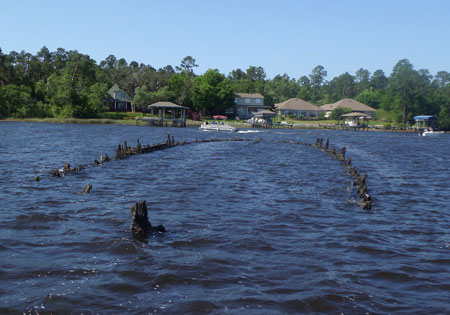 All that's left. The hull ribs of the wooden sailing schooner,George T. Locke, visible in winter with a low tide and a north wind. Built in 1917, converted in the age of steam to duty to a tow barge, eventually abandoned in 1933 in Blackwater Bay. Age, you thief.
All that's left. The hull ribs of the wooden sailing schooner,George T. Locke, visible in winter with a low tide and a north wind. Built in 1917, converted in the age of steam to duty to a tow barge, eventually abandoned in 1933 in Blackwater Bay. Age, you thief. Vessels at the end of their useful commercial life would be scuttled in the river and burned to the water-line. The remains of at least 15 crafts can still be found in the waters around Milton and neighboring Bagdad. We sailed right over one, but the water was too high to make out the outline. Captain Ken had a book with a picture that was only a few years old, and the tips of the old ribs of the hull could be clearly made out under the surface. The rotting remnants sit in about 30 feet of water. But slightly closer to town by the I-10 overpass the river runs as deep as 60 feet.
The Blackwater region's main role in modern times is recreational. A hunting, fishing, hiking, camping and boating playground for outdoor enthusiasts.
Mostly the river flows through the undeveloped lands of the Blackwater State Forest and Blackwater River State Park. These parks are core areas of the largest "contiguous longleaf pine/wiregrass ecosystem" left in the world, a preserve said to be rarer than a tropical rainforest.
The local wildlife population includes deer, turkeys and bobcats. River otters make an occasional appearance. Supposedly there are no alligators in the river due to cool temperatures and its sandy bottom, but there are locals who will tell you differently. But even they hasten to add, it's a rare sighting; they don't like you either.
 The Blackwater's west shore: once the scene of vibrant industrial activity, now reverted to wilderness. In places, the remains of steam pipes that once powered the sawmill can be gleaned just below the waterline running along the shore. The trees are Live Oaks, which unlike sawmills can survive for centuries.The USS Constitution ("Old Ironsides") was built from live oak wood. The moss is Spanish Moss, what else?
The Blackwater's west shore: once the scene of vibrant industrial activity, now reverted to wilderness. In places, the remains of steam pipes that once powered the sawmill can be gleaned just below the waterline running along the shore. The trees are Live Oaks, which unlike sawmills can survive for centuries.The USS Constitution ("Old Ironsides") was built from live oak wood. The moss is Spanish Moss, what else?Bird species to be spied include woodpeckers, hawks, crows, warblers and Mississippi kites. Shorebirds such as plovers and sandpipers and heron and egret and even the aforementioned bald eagle can be found along the banks and sandbars.
There are a surprising number of sailboats in the area, stacked in the inland boatyards, sitting in slips along the river banks and resting in people's front yards.
It's a short motor to the bay and in an hour you're in the Gulf of Mexico, and your next port of call can be as far away as your imagination and energy will take you.
A lot of people are content to just sail around in the bay(s). Blackwater, East Bay and Escambia: they all interconnect. Take your pick.
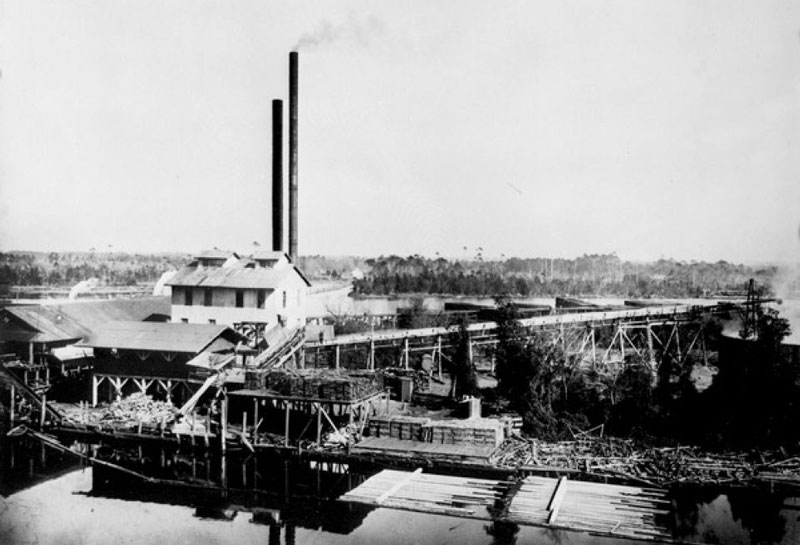 Before the wood ran out, the Bagdad sawmil. Bagdad is a suburb, in a manner of speaking, of Milton, and so named because it sits at the confluence of several branches of the Blackwater just as its eponymous forebear sits astride the Tigris and Euphrates. They just couldn't get the spelling right.
Before the wood ran out, the Bagdad sawmil. Bagdad is a suburb, in a manner of speaking, of Milton, and so named because it sits at the confluence of several branches of the Blackwater just as its eponymous forebear sits astride the Tigris and Euphrates. They just couldn't get the spelling right.Forbes Magazine has a web posting that is (regardless of your political persuasion) well worth the read that looks at the S&P 500's performance during presidential administrations going back to Truman. The results are probably not what you might think and, even more likely, not for the reasons you might think.
The sad truth is, most of us already instinctively know what they're telling us, we just can't bring ourselves to admit that we know it. It interferes with what we believe in our hearts. (Like Mercutio said, "A pox on both your houses.")
The Forbes piece calls the common belief that the market fares better under Republican presidents than democratic ones just another case of "fake news," and it relies on Jeremy Siegel, the Russell E. Palmer Professor of Finance at the Wharton School of the University of Pennsylvania (how equally ironic) to make the case. Siegel calls Wall Street’s obsession with politics mostly misplaced, noting “Bull markets and bear markets come and go, and it’s more to do with business cycles than presidents.”
The cold fact is that since 1952 stock market returns under Democrats have been 10.6% compared with 4.8% for Republicans. But as Siegal points out, this simple statement "does not imply cause and effect.”
He points to the commonality of events that unexpectedly but routinely play important roles in derailing the hopes and dreams of presidents from both sides of the aisle: terrorism for George Bush Jr., civil unrest for Nixon and Johnson, for Reagan a trade war with Japan, and of course a pandemic for Trump.
Do yourself a favor; read the article. It's not too long, and has easy to understand charts and graphs for the verbally impaired or just lazy, including the following one, which is sure to generate lots of contentious debate around your dining room table the next extended family gathering.
What fun.
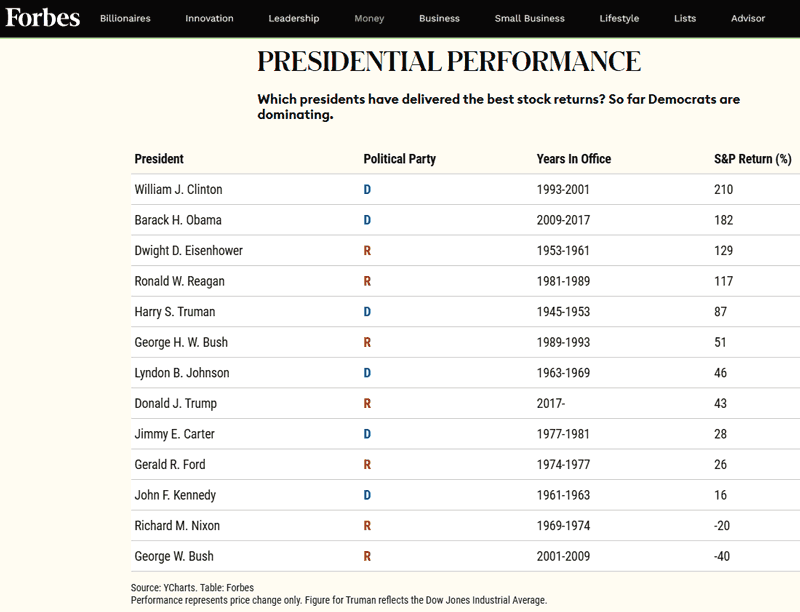
Forbes closes by pointing out there's still no better place for your money than the market. In the long run, that is, and invested the way you're probably most comfortable with anyway—possibly the only way you know—namely "buy and hold." The writers observe, "A $1,000 investment in an index of large U.S. stocks in January 1945 would have compounded at an annual total return of 11% and would have been worth $2.3 million by the end of 2019."
Just to 2019? Yeah, well, things like timing in and timing out still matter.
4/29/20 -- 1,000 Words:
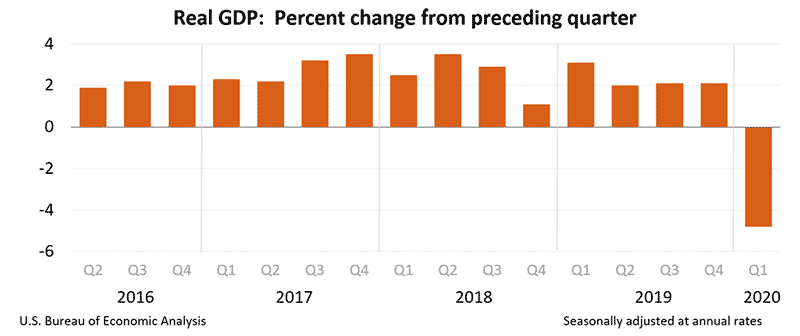
With apologies to Kurt Weill and Maxwell Anderson, the last sentence of that last paragraph is lifted from the song "September Song." A tune that was originally featured in the Broadway show 'Knickerbocker Holiday' in 1938. The singer was Walter Huston. The show's composer, Weill, and his lyricist, Anderson, wrote it, at the actor's insistance, especially for Huston. And they did it with keen awareness that, while a great actor, Huston as a singer was somewhat limited in range and vocal power. It could be argued their creative talents cleverly turned his vocal limitations into a powerful vehicle for projecting the longing and melancholy mood that is the touching essence of the song.
A whole gaggle of artists, from Bing Crosby, Frank Sinatra, Burl Ives, Sarah Vaughan and Jimmy Durante to Willie Nelson Lou Reed and Jeff Lynne of Electric Light Orchestra (with George Harrison on slide guitar), have covered "September Song" over the years. It could as easily be argued they all were chasing, after, and never quite caught, Huston's perfect pitch. A story to warm the heart's cockles of any scribe who's ever had to pen a speech for someone else to give.
Maybe the President should take a shot at recording it too. It just might be the thing to turn his other things around for him. Or at least give him another fallback career to fall back on. Does anyone know if he can sing? (Don't ask him. And what the hell? Huston couldn't.)
4/15/20 -- Filling Spare Time during Periods of Lockdown
Suppose you devote a little of your time to trying to envision what New Year's Eve will look like this year.
Will we sit in separate corners of our own living rooms, watching the ball drop on a Times Square lifeless and empty below? Or will it be almost full of people packed six feet apart from each other? And how will they maintain their spacing trying to get out of the city afterwards?
What to do after that? You've probably lost interest in the daily news. It's like California weather now: they could tape it once a month and run it as a loop. Maybe plug in some new numbers in the bottom third every couple of days. Nobody can remember from one day to the next how many people have died or are hospitalized or are hospitalized seriously ill. The numbers are large enough by now to have lost all meaning anyway.
All the more reason to devote some time to looking at websites full of statistics about the coronavirus pandemic. Come on, it's interesting and engaging! It depersonalizes things a little. And it's easier to make sense of the numbers if you don't have to try to remember what they were yesterday when trying to make meaningful comparisons.
And really, like you've got anything better to do?
A question: is a pandemic essentially similar epidemics raging across multiple countries simultaneously, spreading "communally," as they say? What if it's just raging across multiple states or regions of a single country, like the United States?
Anyway, here are four websites worth a moment or ten of your time. If you look at each one for 12 minutes daily, that will leave only 15 hours a day to fill up between now and next New Year's. Assuming you get in eight hours sleep without waking up with a start each morning at 5 or 6 am. If that's you, you can burn off another three hours by turning on "Morning Joe" each morning. Record it if you can and hit play as soon as you lurch awake. You'll probably fall about asleep for two or three more hours, leaving you, after another two hours for meals and snacks, only 11 hours to fill up. Then you could mow the lawn and do some chores, but really what's the point?
Each of these sites has a particular strength and style when it comes to giving you more than you really want to know about the pandemic.
 Johns Hopkins - The grand-daddy of Covid-19 websites if such a sobriquet is even achievable in this short timeframe. If you're looking for a dependable overview and not so much looking to build your own spreadsheets, heat charts and timetables, this is a good bet. Details down to the county level, map-based user interface. Plenty of ancillary reading materials. There may be other sites more suitable for quants and quant wannabes, but this thing goes as deep as you're probably going to want to, assuming you can figure out how to navigate it all.
Johns Hopkins - The grand-daddy of Covid-19 websites if such a sobriquet is even achievable in this short timeframe. If you're looking for a dependable overview and not so much looking to build your own spreadsheets, heat charts and timetables, this is a good bet. Details down to the county level, map-based user interface. Plenty of ancillary reading materials. There may be other sites more suitable for quants and quant wannabes, but this thing goes as deep as you're probably going to want to, assuming you can figure out how to navigate it all.
 The Institute for Health Metrics and Evaluation - COVID-19 projections assuming full social distancing through May 2020. Popular with medical professionals who want to know when their protective gear will fail them and when their hospitals will overflow or run out of other resources. It tracks coming apexes by country and state for categories like deaths, beds, ICU beds and ventilators. Charts for Europe and all 50 states. Definitely a must-visit if you've got any travel plans pending for this spring. May as well go in with your eyes open.
The Institute for Health Metrics and Evaluation - COVID-19 projections assuming full social distancing through May 2020. Popular with medical professionals who want to know when their protective gear will fail them and when their hospitals will overflow or run out of other resources. It tracks coming apexes by country and state for categories like deaths, beds, ICU beds and ventilators. Charts for Europe and all 50 states. Definitely a must-visit if you've got any travel plans pending for this spring. May as well go in with your eyes open.
 The Economist’s Coverage of the Coronavirus - This is a website posted by the weekly newsmagazine The Economist. Short and sweet, or at least not a quantitive compendium like most other sites. Primarily article-based and sharply focused, with original graphics not likely to be found elsewhere (a signature Economist specialty). (E.g., "United States Covid-19 cases and deaths under different modeling scenarios, assuming no social distancing.") A pricey magazine with limited online access, so anything these guys are giving away free is worth a look.
The Economist’s Coverage of the Coronavirus - This is a website posted by the weekly newsmagazine The Economist. Short and sweet, or at least not a quantitive compendium like most other sites. Primarily article-based and sharply focused, with original graphics not likely to be found elsewhere (a signature Economist specialty). (E.g., "United States Covid-19 cases and deaths under different modeling scenarios, assuming no social distancing.") A pricey magazine with limited online access, so anything these guys are giving away free is worth a look.
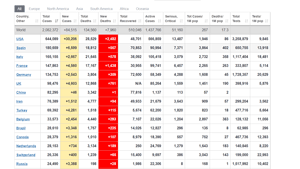 Worldometer - Looking for more granularity? This site is run by an international team of developers, researchers, and volunteers whose aim is apparently to provide you with more world statistics, in a thought-provoking and time-relevant format, than you could possibly absorb. Not just on Coronavirus, but that will do fine for now. How much time are you looking to use up? Here you'll find stats, updated daily, for cases, new cases, deaths, new deaths, total tests, tests per million people and more, plus historical graphs for these and similar categories. Tables covering 212 countries and territories and all fifty states. Whether you're looking to put together detailed statistical comparisons or just trying to scare yourself to death, this is a site you should see. It's Donald Trump's least favorite one. Data for both today and yesterday.
Worldometer - Looking for more granularity? This site is run by an international team of developers, researchers, and volunteers whose aim is apparently to provide you with more world statistics, in a thought-provoking and time-relevant format, than you could possibly absorb. Not just on Coronavirus, but that will do fine for now. How much time are you looking to use up? Here you'll find stats, updated daily, for cases, new cases, deaths, new deaths, total tests, tests per million people and more, plus historical graphs for these and similar categories. Tables covering 212 countries and territories and all fifty states. Whether you're looking to put together detailed statistical comparisons or just trying to scare yourself to death, this is a site you should see. It's Donald Trump's least favorite one. Data for both today and yesterday.
If you're still thirsty for more and willing to search around, most states have sites that offer stats and updates on the virus's local progress. Many allow you to track activity right down to towns and even zip codes. You find something good, please advise. There's not much else to do in Milton even under the best of circumstances.
After that, consider a hobby. Raising llamas. Or take up drinking; many have. Liquor sales are through the roof. So is spousal abuse.
The Economist’s Coverage of the Coronavirus
2/29/20 -- 1,000 Words:
| NYSE DOW |
London Stock Exchange FTSE 100 |
Tokyo Stock Exchange Nikkei 225 |
Börse Frankfurt DAX |
Euronext Paris CAC |
Borsa Italiana FTSI MIB |
Hong Kong Stock Exchange HANG SENG |
-14.10% |
-12.51 |
-11.4% |
-16.02% |
-13.56% |
-11.68% |
-4.51% |
|
Lke what, you're so special? The Washington Post reports President Trump is furious stocks are plunging.
What do you think is responsible? Is it another hoax? Have irresponsible health officials’ warnings spooked investors? Is it because of the media overreporting a pandemic in a dastardly conspiracy to hurt the president's reelection chances? |
Is it because Democrats are making fools on themselves on the debate stage? (And by the way, they are.)
Ah, we Americans … so provincial. What goes around comes around, eh? Just like a virus. Where's FDR when you need him? |
2/25/20 -- Laissez Les Bons Temps Roulez, Y'all

Mardi Gras makes ordinary people do strange things and act in strange ways. It's a festival that goes way back, tracing its roots to medieval Europe and the Bourbon kings of France. Technically those roots may even stretch back to Ancient Rome and the celebration of Saturnalia. In America Mardi Gras celebrations are older than America itself.
A little history. It didn't get its start in America in New Orleans as you might think, but rather in Mobile, Alabama. On March 2, 1699, which happened to be the day before Ash Wednesday, French-Canadian explorer Jean Baptiste Le Moyne Sieur de Bienville arrived at a spot 60 miles due south of New Orleans, and named it "Pointe du Mardi Gras. Bienville also established "Fort Louis de la Louisiane" (which became Mobile) in 1702. In 1703, the tiny settlement of Fort Louis de la Mobile celebrated America's very first Mardi Gras.

Bienville established New Orleans in 1718 . By the 1730s, Mardi Gras was celebrated openly in New Orleans, not with the parades we know today but with elegant society balls. The earliest reference to Mardi Gras "Carnival" appears in a 1781 report to the Spanish colonial governing body. (The French colony was ceded to the Spanish Empire in the Treaty of Paris (1763), following France's defeat by Great Britain in the Seven Years' War.)
By the late 1830s, New Orleans held street processions of maskers with carriages and horseback riders to celebrate Mardi Gras. It remains ground zero for Mardi Gras celebrations, signaling the beginning of Lent and a more abstemious lifestyle for the next six weeks. Clean living, lean eating. Mardi Gras means Fat Tuesday, last chance to stock up on rich, over-caloric cuisine and for excessive drinking and frolicking. Remember man that thou are dust and unto dust thou shalt return. Right after you shut this party down.

King Cakes, popular fare widely available in supermarkets even in the North around the Mardi Gras season, are often decorated with the traditional Mardi Gras color palette. The King Cake takes its name from the biblical kings to whom the Christ child was revealed on the day now observed as the Epiphany in Western Christian liturgical tradition. Get it? Epiphany, Kings, Mardi Gras colors?
Oh, and a little aside. Epiphany? Means revelation. Twelfth Night (the play)? The characters are in disguise and are "revealed" to each other at the end of the play, in a good way. In case you ever wondered where Skakespere got the titile from. Nothing to do with Mardi Gras, strickly speaking. But if you didn't know, now you know.

What many a Yankee may not know is that while the festivities reach their crescendo in New Orleans on Shrove Tuesday, the gaiety starts much earlier and in just about every decent-size town along the Gulf Coast from Galveston, TX through southern Mississippi and Alabama and across the Florida panhandle all the way to the Atlantic Ocean.
And as far North as St. Louis, Missouri, which claims to host the second largest Mardi Gras celebration in the United States. (St. Louis was founded by French fur traders.) It's not just those Cajuns who know how to party it down. The whole south coast of the country is fairly rockin' from Epiphany until the first day of Lent.
Mardi Gras parades are traditionally put on by private social organizations called "krewes (and pronounced "crews"). A krewe's members are assessed fees in order to pay for the parades. They also sponsor balls, which remain a big part of the Mardi Gras tradition, some of them quite fancy. Annual membership fees can range from thousands of dollars per person for krewes involved in the biggest and grandest parades to as little as $20 a year for smaller clubs.

In smaller cities with smaller budgets or aspirations, the krewe members are actually the workers who build and decorate their floats. They even make their own costumes. For the largest parades and the largest floats, krewes hire professionals to do the work.
Parading krewe members are usually responsible for buying their own "throws," beads and coins and such, to throw to parade spectators. If you want to skip all the work and just ride along, you can actually arrange to pay to be on a float. Depending on the krewe you select and the parade day, it will set you back: $2,400 to $3,700.

Ever since krewes began parading through New Orleans over 100 years ago, parade floats have played a major role in Mardi Gras history. These floats can be quite elaborate and artful. Many parades are themed each year, so floats have to be created or modified to reflect those themes. The most ambitious floats can easily cost $15,000 or more to construct, and they're not made overnight. Krewes often work on their creations year-round. Like anything else in life, when you get to the big time, you'll find it a serious business.

The town's population is about 42,000, which is approximately the same as the number of people who come to watch.
The parade steps off at 1 pm, features about 50 floats, runs for about two miles and lasts about two hours. The Sherriff's Dept. closes off the causeway bridge sometime before noon. No more room.
- 2 tablespoons vegetable oil
- 1 pound andouille sausage, diced
- 3 pounds skin-on, bone-in chicken thighs
- Kosher salt
- 1/2 cup plus 2 tablespoons all-purpose flour
- 4 stalks celery, diced
- 1 large onion, diced
- 1 green bell pepper, chopped
- 4 cloves garlic, minced
- 1/4 teaspoon cayenne pepper
- 4 cups low-sodium chicken broth
- 1 pound medium shrimp, peeled and deveined
- 2 tablespoons dry sherry
- Freshly ground black pepper
Make the roux: Remove the pot from the heat and cool slightly (there should be about 1/4 cup drippings; drain or add oil as needed). Return the pot to medium heat. Sprinkle in the flour and stir, scraping up the browned bits from the pan with a wooden spoon. Continue to cook, stirring, until the mixture smells nutty and turns a deep brown, 10 to 12 minutes. Add the celery, onion, bell pepper, garlic, cayenne, and salt to taste. Cook, stirring, until the vegetables are tender, 6 to 8 minutes.
Whisk in the broth. Return the chicken and andouille to the pot and simmer until the chicken is cooked through, about 25 minutes. Transfer the chicken to a plate and let cool slightly while the stew simmers; remove the skin and shred the meat. Return the meat to the pot. Stir in the shrimp and sherry and cook until the shrimp turn pink, 2 to 3 more minutes. Season with salt and black pepper.



2/18/20 -- Super Tuesday
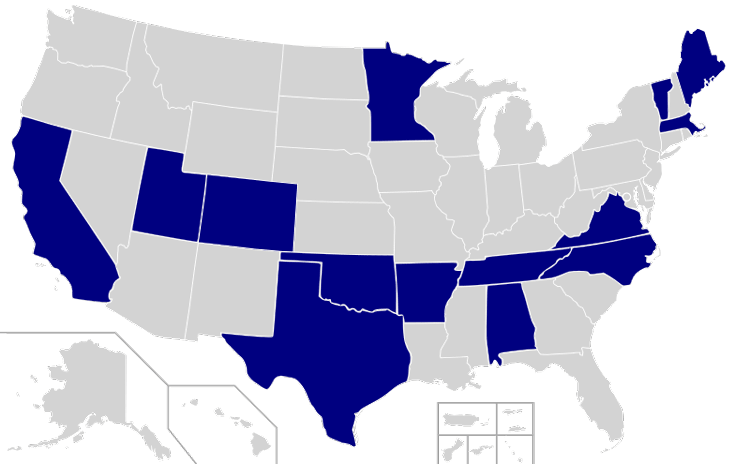
Herewith the ABCs of counting delegates in this election year. On March 3rd, 1,357 of the 3,979 pledged delegates to be awarded to the candidates in all the Democratic primaries for the 2020 Presidential Election will be decided.
That's about one-third of what's needed to seal the nomination on the first ballot, and it all goes down in one day. That's why they call it "Super Tuesday."
The Iowa Caucuses awarded 20 pledged delegates. New Hampshire awarded 24. Why do they bother? Maybe Bloomberg knew what he was doing. (Even more so now that we've seen him debate.)
Fourteen states will hold their primaries this Super Tuesday. No one can get ahead of Iowa's and New Hampshire's preferential treatment. Two other states have primacy as well. Nevada holds its caucuses on Saturday, Feb. 22. It has 36 pledged delegates. It also has 12 superdelegates. South Carolina’s Democratic primary will take place on February 29, with 63 delegates at stake, 54 of them pledged.
So then March 3rd is as early as other states can get. This year California, which used to go later in the year, moved its primary up to Super Tuesday, so as to be more relevant.
Nothing worse than holding your vote after the race is already decided. Your vote may still be determinative but it's the early primaries that shape the race and solidify the leads of the frontrunner(s). Most people think the race is pretty much decided after that, although this is possibly the year they're wrong.
It is a lot of votes. California (415 delegates) and Texas (228 delegates), the two most populous states in the country, account for 643 of the day's delegates all by themselves.
| Primary | Dem Del. | GOP Del. | Type |
|---|---|---|---|
| Alabama primary | 52 | 50 | Open |
| Alaska Republican convention | 0 | 28 | Closed |
| American Samoa Democratic caucus | 6 | 0 | Closed |
| Arkansas primary | 31 | 40 | Open |
| California primary | 416 | 172 | Mixed |
| Colorado primary | 67 | 37 | Open |
| Maine primary | 24 | 22 | Closed |
| Massachusetts primary | 91 | 41 | Mixed |
| Minnesota primary | 75 | 39 | Open |
| North Carolina primary | 110 | 71 | Mixed |
| Tennessee primary | 64 | 58 | Open |
| Texas primary | 228 | 155 | Open |
| Utah primary | 29 | 40 | Closed |
| Vermont primary | 16 | 17 | Open |
| Virginia primary | 99 | 49 | Open |
| Democrats Abroad (to 3/10) | 13 | 0 | Closed |
If no candidate should get a majority of delegates on the first ballot in Milwaukee, a second ballot will be held. This is when the superdelegates get to vote (an estimated 771 elected officials like members of Congress, Governors and leading party officials). Also, pledged delegates are released to vote as they choose after the first ballot according to DNC rules. Again, a majority wins.
Not counting the superdelegates until the second round is a refinement the Democratic National Committee (DNC) put in following the fallout from the 2016 race, when supporters of Sen. Bernie Sanders (I-VT accused the national party of tipping the scales in favor of former Secretary of State Hillary Clinton. Clinton had early on secured considerable verbal commitments among superdelegates (who are technically uncommitted). After the New Hampshire Primary one DNC member quipped that Sanders had gone to bed ahead, and woke up effectively tied in the delegate count once those commitments were added in.
- In 1831 the Anti-Masonic Party convened in Baltimore, MD to select a single presidential candidate agreeable to the whole party leadership in the 1832 presidential election.
- The term "dark horse candidate" was coined at the 1844 Democratic National Convention, when a little-known Tennessee politician, James K. Polk, emerged as the choice after the failure of the leading candidates—former President Martin Van Buren and Michigan Senator Lewis Cass—to secure the then-necessary two-thirds majority.
- Florida enacted the first presidential primary in 1901.
- In 1910, Oregon became the first state to establish a presidential preference primary, which requires delegated to the National Convention to support the winner of the primary at the convention.
- By 1912, twelve states either selected delegates in primaries, used a preferential primary, or both. By 1920 there were 20 states with primaries, but some later reversed course.
- The primary got its first major test in the 1912 Republican Convention with President William Howard Taft up against Theodore Roosevelt and Robert La Follette. Roosevelt proved most popular in primary voting, but those were non-binding and held in only fourteen states. At the convention, the nomination went to Taft.
- The 1924 Democratic National Convention required a record 103 ballots to nominate John W. Davis.
- In 1952, Senator Estes Kefauver of Tennessee beat sitting President Harry S. Truman in the New Hampshire primary, leading the latter to drop out of the race. Kefauver went on to win 12 of 15 primaries but in the end lost out to Adlai Stevenson, governor of Illinois. Stevenson was first choice of the Democratic Party political bosses. He had resisted calls to enter the race but was nominated anyway by a "Draft Stevenson" movement following his eloquent keynote speech on the opening night of the convention.
- In 1968, Vice President Hubert Humphrey got the Democratic nomination despite not winning a single primary. After that the National Democratic Party adopted rules that called for more delegates to be selected by primaries.
- Primaries were adopted as the principal nominating tool by the Democratic National Committee in 1968. Republicans adopted the primary as their preferred method in 1972. By 1992 Democrats had primaries in 40 states, Republicans in 39.
Yes, yes, time marches on. But new and improved doesn't always mean better. When conventions played the vital role in deciding a party's nominee, they could be heated affairs, far from democratic or transparent. Political bosses controlled nearly all of the delegates and decision-making was often shrouded in secrecy and intrigue. But who says that was totally a bad thing?
A good argument can be made that nominees chosen by party elites are more likely to produce presidents who will more closely represent the preferences of the average voter. Primary voters tend to be more ideologically aroused than the average Joe or Jane. And they get behind candidates who often aren't even representative of the core of their own party much less of the general voting populace. Candidates closer to the middle still have to prove how fiercely partisan they are to appeal to the ideologues most likely to vote in primaries.
Party leaders, on the other hand, are likely to seek out a legislator or executive with the experience and temperament that more closely fits within the general public’s perceived preferences. They have an incentive to find a candidate who appeals to the median voter because they want to be in power when the dust settles, and that means capturing the broadest range of the general electorate. Richard Nixon used to say you have to run hard right in the primaries and then turn into a centrist in the general election.
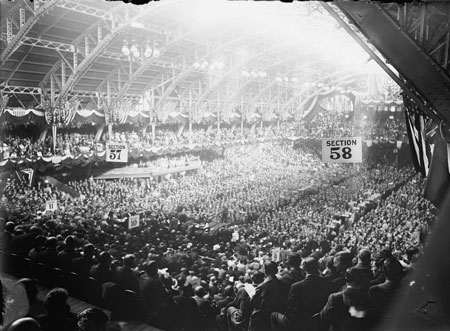
Consider this. Sanders may have complained that superdelegates were putting the fix in for Hillary Clinton in 2016. But the truth is, both parties invented superdelegates for the express purpose of reversing potentially bad decisions by their rank and file.
The voting process needs to be democratic and in the open, but that doesn't mean every aspect of the nominating process has to be rooted in the democratic process. There could be a role for professional judgment and experience to play. (For some quick insight into our Framers' democratic state of mind, click here.)
Unquestionably, there were some structural flaws in the "smoke-filled rooms" of yesteryear, but that routine evolved with a purpose. America may never come up with a political process that some politicians won't try to game. But the first goal of reform should be, like the doctors say: "First, do no harm." Separate baby and bathwater.
Just for the sake of argument, what if Bernie Sanders winds up with the Democratic nomination because the more moderately inclined candidates, and there are more of them, cancel each other out? So he beats all of them not collectively but head to head, getting a 40% plurality. And then goes on to lose to Trump, marginally unpopular himself, 48% to 46%.
In 2016 the primary system gave American voters arguably two of the least popular presidential candidates in American political history.
2/9/20 -- Same as It Ever Was
The Tax Reform Scorecard (top link on right) was launched in 2017 to gauge whether the Trump administration's Tax Reform package of that year would live up to the hype.
The betting among those who derided it as a needless give-away to large corporations and wealthy taxpayers was, naturally, that it could not. But they may not have just been cranky curmudgeons.
Now, two years out, it is instructive to note that Administration spokespeople, while continuing to hail the 2017 GOP tax plan as a signal accomplishment, tend to speak only in benign and vaguely generalized terms. Nobody tries to bring up any numbers anymore to support their case.
It probably never really had a chance to be the muscular game-changer Treasury Secretary Steven Mnuchin envisioned. In September 2017, he boldly predicted that not only would the plan “pay for itself, but it will pay for the debt” and “cut down the deficits by a trillion dollars."
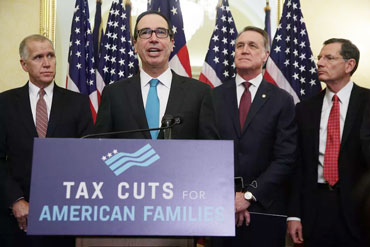
A bridge too far, a height too lofty. Nobody outside a small circle of fanatical supply-side economists believes that tax cuts even pay for themselves. Where Mnuchen was headed was way past the second star to the right and straight on til morning.
The stated ambitions behind that legislation as enumerated by Secretary Mnuchen and other supporters were these:
- Improved GDP growth (Gross Domestic Product, basically economic output)
- Growth in jobs, earnings and corporate investment
- Revenue growth sufficient to control and even reduce the federal deficit.
In 2018, besotted by an upward lurch in GDP the President was moved to proclaim, "So we're at 3.3 percent GDP. I see no reason why we don't go to 4 percent, 5 percent, and even 6 percent.”
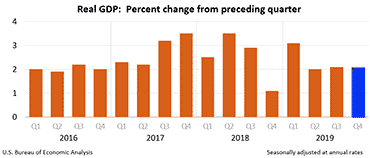
For the record, 4th quarter GDP is 2019 was 2.1%. Second quarter in a row. "A long time forgotten, the dreams that just fell by the way .... "
The good life he promised, ain't what she's living today
But she never complains of the bad times
And the bad things he's done
She just talks about the good times they've had
And all the good times to come
She's a good hearted woman in love with a good timin' man
She loves him in spite of his ways she don't understand
Through teardrops and laughter, they'll pass through this world hand in hand
A good hearted woman lovin' a good timin' man
 you know that Waylon Jennings once upon a time looked like this?
you know that Waylon Jennings once upon a time looked like this?
Tax revenues never got near anything like the infusion Treasury Secretary Steven Mnuchen was looking for. The boost in personal income? Not bigly either except for top-end earners, but for them income indeed grew. And why would it not? The government handed them a lot of money. The bottom 70% of wage earners didn't see much of that action though, and what they did see was in many cases cancelled out by the new cap on state and local income, sales, and property tax deductions.
Employment growth is still strong, but that seems more like the continuation of a longer-term pattern. The job market was already doing quite well.
In any event, those heady original projections could very likely have been little more than a convenient cover story masking the real motivation pushing the Tax Reform Act forward. Republican leaders may have just been making good on a campaign promise rich supporters had extorted from them during the 2016 election cycle. Well-quoted sources on both sides of the Congressional aisle have suggested as much.
The Congressional Leadership Fund, a Republican super PAC blatantly warned lawmakers who might stand in the way of the tax cuts in the House not to expect any share of the $100 million it expected to spend on the upcoming midterm elections.
Current presidential candidate Bernie Sanders fervently believes this narrative. He called the 2017 tax cuts at the time "a thinly disguised reward to billionaire extreme right-wing donors."
Chris Collins, a Republican Congressman from New York echoed that view, albeit more softly but admitting to reporters that pressure from donors made the reform essential. "My donors are basically saying, ‘Get it done or don’t ever call me again,’” he said.
President Trump boasted the bill would be like rocket fuel for the economy. But all that really took off was the federal deficit, the one thing that wasn't supposed to happen. It's now on track to pass a trillion dollars, a figure broached only in the dark days of the Great Recession. Not what one would expect in a healthy, growing economy.
The original intent with the Scorecard was to track six salient metrics for three years to see how close the White House's flights of fancy might come to realization. But there's no need to go further. The Trump tax reform hasn't done much to move any of those metrics, certainly not to an extent that matches expectations. And now, presumably, the time has pretty much passed.
But all that said, the Scorecard charts turned out to be a useful graphical way of tracking economic progress over time. Unfortunately, casual feedback from readers makes clear many could not make heads or tails out of all those numbers.
Part of this was self-inflicted, the result of trying to report a range of numbers that resist apples-to-apples quarterly comparisons.
For instance, GDP quarterly displays are in line with how that benchmark is tracked. But the revenue and deficit presentations are not so informative. First, the disparity from quarter to quarter is both too arbitrary and too large—due to uneven revenue inflows (e.g., the April 15th revenue bulge). Second, those numbers get published not quarterly but monthly and not on a calendar- but a fiscal-year basis. (The federal government keeps its books from October to the following September 30.)
So here's a slightly revised design, much much better than new, separating revenue and deficit numbers annually and on a fiscal-year basis. GDP and related investment growth figures as well as employment and earnings figures are still displayed quarterly on a calendar-year basis.
Confusing? Not really. Just look at the tables. Look often enough and you won't even have to check out how the stock market is doing. You'll already know where it's going.
Of course, the guys who do this for a living well know too. And will probably still find out sooner than you will. That's why they do this for a living. But really, it's no harder than Fantasy Football.
Or don't you do that either?
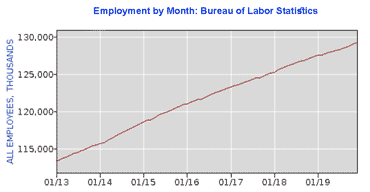
1/20/20 -- Ah the Siren Song of Protectionism: an Old Fashioned Love Song or Just a Catchy Tune?
Abraham Lincoln, 1847
America has been a staunchly protectionist country for most of its history. Not just Lincoln, but before him Hamilton, Jefferson, the Adamses, both father and son: all championed protective tariffs.
Not to mention the Father of our Country. One of the very first bills Washington signed as President was a tariff: the Tariff Act of 1789.
Predictably, its stated purpose was to raise money for the new federal government, reduce Revolutionary War debt and protect the fledging country's fledgling industries from from foreign imports. And tea.
Most goods entering the U.S. were subjected to a 5% tariff (although there were cases where the rate would go as high as 50%). But on the whole, pretty modest stuff actually.
Still, tariffs generated the bulk of federal receipts up until 1913 when Congress passed its first federal income tax. In some years tariffs funded as much as 95% of the federal budget.
Tariff sentiments were not exactly homogeneous across the land. The (relatively) industrialized Northeast favored protective tariffs to bolster its competitive position versus Old World industrial importers. Southerners generally opposed tariffs because they were primarily consumers of European goods for their homes, farms and business.
Plus, the South, with an economy predominately agriculture-focused, didn't want anything to complicate its access to Europe's markets, which protectionism would surely do. Boiled down to its essence, Southerners were often inclined to see a tariff as a transfer mechanism that moved wealth geographically from south to north. And it rankled them. Can you sense where this is going?
In 1832 the so-called Tariff of Abominations created a constitutional crisis starring Andrew Jackson and South Carolina. Jackson's Vice President John C. Calhoun (S.C., Dem. - but Calhoun often served as a virtual party-independent who variously aligned as needed with Democrats and Whigs). Calhoun resigned his office and ran successfully for the Senate where he became a champion of Nullification, the contention that a state has the right to declare any federal law it considers unconstitutional to be null and void within its boundaries.
It became a crisis in that it gave rise to a powerful movement towards secession in the South—very nearly a civil war before the Civil War. Jackson dispatched federal troops to Charleston, and South Carolina in turn prepared to muster troops of its own.
Tensions were reduced at length through a Congressional compromise (Remember Henry Clay?), but residual hard feelings from this long-simmering dispute are generally considered to have contributed to the start of the real Civil War thirty years later. "Forget, Hell!"
Tariffs began to decline in importance after 1914 and the income tax, but ideological positions didn't change much until the Great Depression.
The Smoot-Hawley tariff of 1930 gave rise to tit-for-tat global trade barriers that deepened the depression, and by the middle of the decade the Roosevelt White House was working to undo the damage.
By the end of World War II, tariffs had lost favor in Washington. Republicans morphed into free marketers and joined Democrats in a commitment to low tariffs. Why? American companies had come to dominate the global economy. Ronald Reagan particularly reviled them
Protectionism lost favor as a useful tool for boosting growth, and things stayed that way until foreign competition once again started to creep into U.S. markets in the mid '70s. Remember the foreign car invasion? Remember when "made in Japan" evolved from a slur into a stamp of quality?
But tariffs have returned to Washington in fine style and high fashion under the Trump administration. Only this time to protect against fledgling industries (China's) and in response to that country's perceived abusive and predatory trade practices, many of which fall outside of international trade rules and contribute to America's trade deficit. These include stealing intellectual property, publicly subsidizing private enterprises and forcing trading partners to transfer proprietary technology to China as a price of doing business.
President Trump is fond of claiming that punitive tariffs have generated billions of dollars in new revenues for the U.S. Treasury, paid by China, but tariffs don't exactly work that way. Tariffs are taxes paid by U.S.-registered firms to U.S. customs when goods they order from outside the United States enter the country.
Customs duties have indeed been a windfall for Washington. According to the Congressional Budget Office, they grew by $29 billion (or 71%) in the last fiscal year primarily because of the new tariffs imposed on China. That income has helped counter revenue losses resulting from the 2017 tax cut (which triggered a $92 billion drop in corporate tax receipts in FY 2018).
U.S. Importers employ a mix of ways to spread tariff costs among suppliers and buyers, including accepting lower profit margins for themselves, cutting costs, wages and jobs, and, of course, raising prices to end-consumers.
Chinese suppliers may also choose to absorb some of the cost increase, for instance by giving discounts to U.S. importers in order to maintain contracts and market share. U.S. importers can also look for suppliers in other countries with more favorable US tariff rates, and growing numbers of companies are doing so. But in the end guess who pays the lion's share?
The scarier headlines project future costs to the consumer based on both actual and proposed tariff increases, and most of the latter will never actually be imposed. However, according to a report by JP Morgan Chase last August, Tariffs already imposed on China are estimated to be costing the average American household $600 per year. Other estimates broadly match up with this.
Still other estimates calculate the trade wars are trimming U.S. GDP growth by about quarter of a point. (E.g., The Tax Foundation estimates they reduce long-run GDP by 0.26%, wages by 0.16%, and employment by 198,700 full-time equivalent jobs.)
Is it all worth it? Time will tell. But The Washington Post point out that compared to every other advanced economy, the United States is actually fairly well insulated from trade. We import 15% of our GDP and export 12%. Good numbers for a rich country.
The final story will be told more likely by historians than economists. Certainly not by politicians. You could start here with a column penned a little while back by James Stewart on the mother of all trade wars. "What History Has to Say About the 'Winners' in Trade Wars" appeared in Stewart's "Common Sense" column in The New York Times in March 2018.
Stewart is a highly seasoned journalist and author of a barrel of acclaimed books on the American business and political scene including "Den of Thieves," on the 1987 stock market crash and "Blood Sport: The President and His Adversaries," on the Clintons and Whitewater.
It's a column you should read. It's not too long, it's a very thorough survey, and it could make you a better person. One better prepared for the times that may be coming. Click here.
